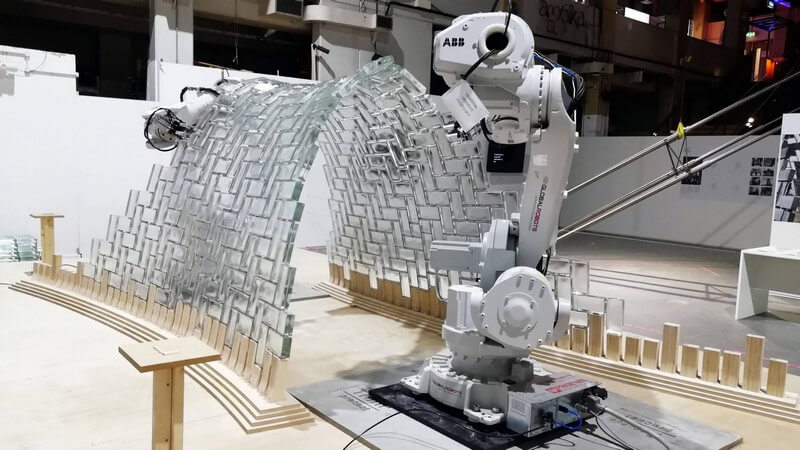Glass Vault
Researchers dr. ir. Faidra Oikonomopoulou (BK) and ir. Telesilla Bristogianni (CiTG) from the TU Delft Glass Research Group, were involved in yet another pioneering structure out of cast glass bricks: The Glass Vault is a joint effort between SOM and Princeton University c.r.e.A.te lab and Form Finding Lab, with assistance from the TU Delft Glass Group and is one of the SOM’s latest demonstration projects in automated robotic construction.

The glass brick vault structure was assembled live onsite by robots through the course of SOM’s Anatomy of Structure Exhibition in Ambika P3 Gallery, London. The demonstration marries architecture and digital fabrication to explore the new frontier in building construction.

The Glass Vault explores how robotic fabrication methods can support new ways of designing and building structures. The accuracy and spatial awareness of the robotic arms allows them to place the glass bricks at their required location in space without the need for guides and scaffolding, reducing the amount of material needed to fabricate the structure.

The robotic arms collaborate with one another to build the central portion of the vault: one robot acts as a temporary support while the other robot places the material, eliminating the need for formwork and further reducing the material needed for construction. The glass vault forms simultaneously a beautiful demonstration of the structural virtues of glass.

The realization of this glass brick assembly came along with several challenges that needed to be tackled. The research was therefore focused on minimizing the fabrication tolerances of both the bricks and the robotic assembly, on the use of a repetitive and readily available brick unit, the stability of the structure during construction, the ability to construct the vault using only two robots, the intermediate used for quickly bonding the bricks together.

To validate the structural integrity of the construction in a quick and cost-efficient manner, initial prototypes were made using a combination of glass and concrete bricks of identical dimensions at Princeton University, USA.

The Glass Vault can be seen as a collaboration between robots and humans. The robots perform tasks that require accuracy and spatial awareness, such as placing the glass bricks, while the humans perform tasks that require flexibility and the ability for real-time adjustments, such as applying the epoxy to gap sizes that vary due to geometry, as well as material and construction tolerances.





























Comments